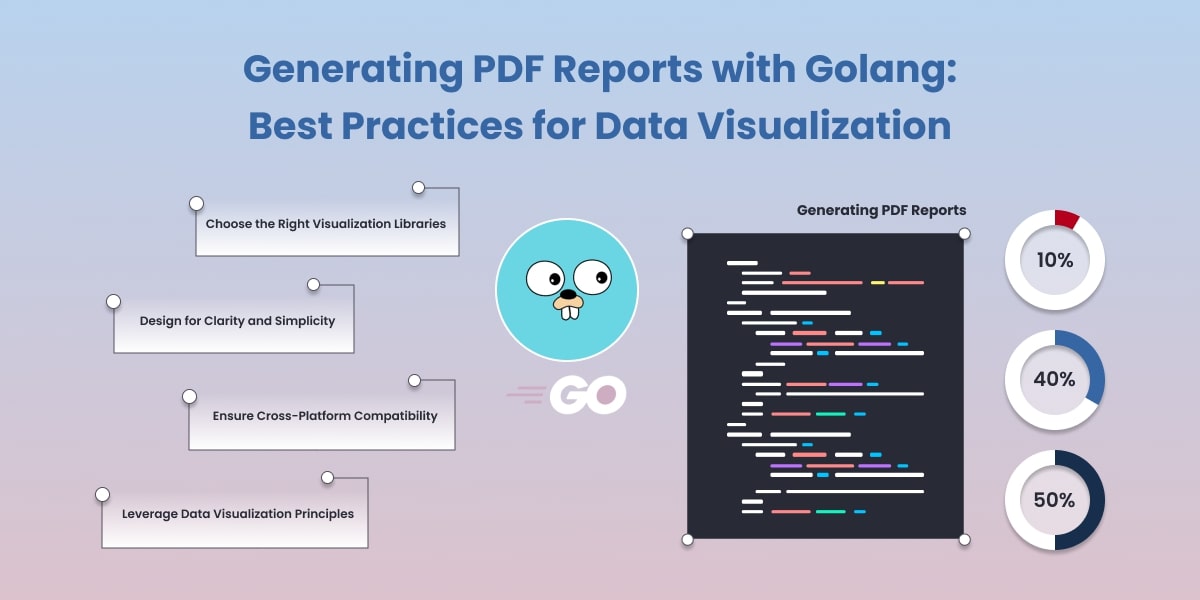Golang PDF Library in Healthcare: Enabling Efficient Medical Report Generation
In the digitized age of healthcare, efficient and accurate medical report generation is crucial. The ability to create, manipulate, and produce medical reports in a quick and seamless manner can significantly impact patient care and overall workflow efficiency. That’s where a Golang PDF library comes into play, revolutionizing the way healthcare professionals generate medical reports.
1. Simplifying Medical Report Generation with Golang PDF Library
The use of Golang PDF libraries in the healthcare industry has gained traction due to their ability to simplify and streamline medical report generation. These libraries provide developers with the necessary tools to create, edit, and generate PDF files programmatically, allowing for seamless integration within existing healthcare systems.
By leveraging a Golang PDF library, healthcare professionals can quickly generate customized medical reports tailored to meet individual patient needs. This eliminates the need for manual report creation, saving valuable time and resources while ensuring accuracy and consistency in the generated reports.
2. Enhancing Workflow Efficiency and Patient Care
Implementing a Golang PDF library in healthcare systems brings about numerous benefits that directly enhance workflow efficiency and patient care. With the ability to generate medical reports efficiently, healthcare professionals can allocate more time to patient care, ultimately improving the quality of care provided.
Moreover, the customizable nature of Golang PDF libraries allows for the inclusion of relevant patient data, images, and diagnostic information, creating comprehensive reports that aid in accurate diagnosis and treatment.
This ensures that healthcare professionals have access to all the necessary information at their fingertips, leading to better-informed decision-making and improved patient outcomes.
3. Security and Compliance in Medical Report Generation
Security is a critical concern in the healthcare industry, particularly when handling sensitive patient data. To address this, it’s advisable to select a Golang PDF library that provides encryption and password protection features for PDF files. It’s important to note that not all Golang PDF libraries offer these encryption features. Encrypting the PDFs themselves is essential to protect patient information from unauthorized access, ensuring compliance with privacy regulations and maintaining patient confidentiality.
Additionally, these libraries allow for easy integration with existing healthcare systems, ensuring seamless data transfer between different platforms. This eliminates the need for manual data entry and reduces the risk of human error, further enhancing data security and compliance.

The Challenge of Medical Report Generation
Generating medical reports is a cornerstone of modern healthcare. From diagnostic results and treatment plans to patient histories, medical reports contain vital information that informs clinical decisions and facilitates effective communication among healthcare providers. However, the traditional process of generating these reports can be time-consuming and error-prone.
As patient loads increase and the demand for accurate and timely reporting grows, healthcare institutions face the challenge of striking a balance between speed and quality.
Efficiency Through Concurrency
One of the standout features of the Golang PDF library is its robust support for concurrency. In a healthcare setting, where time-sensitive tasks are abundant, the ability to generate multiple medical reports simultaneously is a game-changer.
Golang’s lightweight goroutines allow healthcare systems to handle numerous report generation tasks concurrently, significantly reducing the time it takes to produce reports. This not only enhances operational efficiency but also ensures that healthcare professionals can access up-to-date patient information promptly.
Seamless Integration with Data Sources
Integrating the Golang PDF library with existing healthcare information systems is a breeze. Whether the data resides in electronic health records (EHR) systems, laboratory databases, or other medical repositories, the library’s flexibility allows developers to seamlessly extract and incorporate data into the generated PDF reports. This ensures that medical reports are accurate, comprehensive, and reflective of the most recent patient information.
Customization for Diverse Use Cases
Healthcare is a diverse field, encompassing a wide range of specialties and medical scenarios. The Golang PDF library’s versatility enables healthcare institutions to tailor the appearance and content of medical reports to suit different use cases.
From radiology images and test results to surgical summaries, the library’s customizable templates empower healthcare providers to create reports that align with their specific requirements. This flexibility fosters clear communication and collaboration among multidisciplinary teams, ultimately leading to improved patient outcomes.
Enhanced Data Security and Compliance
In healthcare, data security and compliance with regulations such as HIPAA are non-negotiable. The Golang PDF library’s robust encryption and security features ensure that sensitive patient information remains protected throughout the report generation process.
By adhering to industry standards and best practices, the library helps healthcare institutions maintain the confidentiality and integrity of patient data, building trust and credibility among patients and stakeholders.
Conclusion
In conclusion, the use of a Golang PDF library in healthcare systems revolutionizes medical report generation by simplifying the process, enhancing workflow efficiency, and improving patient care.
With its customizable features, secure data handling, and compliance with privacy regulations, healthcare professionals can generate accurate and comprehensive reports with ease, ultimately leading to better patient outcomes.
By leveraging the power and versatility of a Golang PDF library, healthcare organizations can streamline their operations, save valuable resources, and provide high-quality care to their patients.


